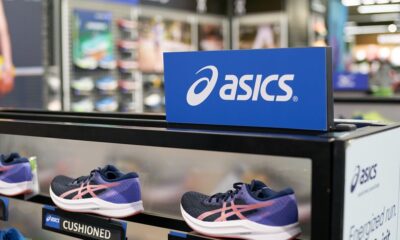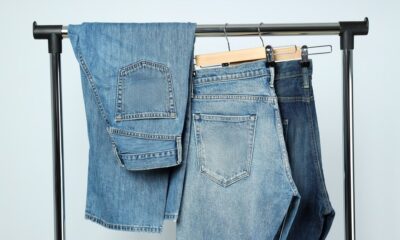Fashion
US’ Nike partners with Jacquemus to reinterpret historic Moon Shoe
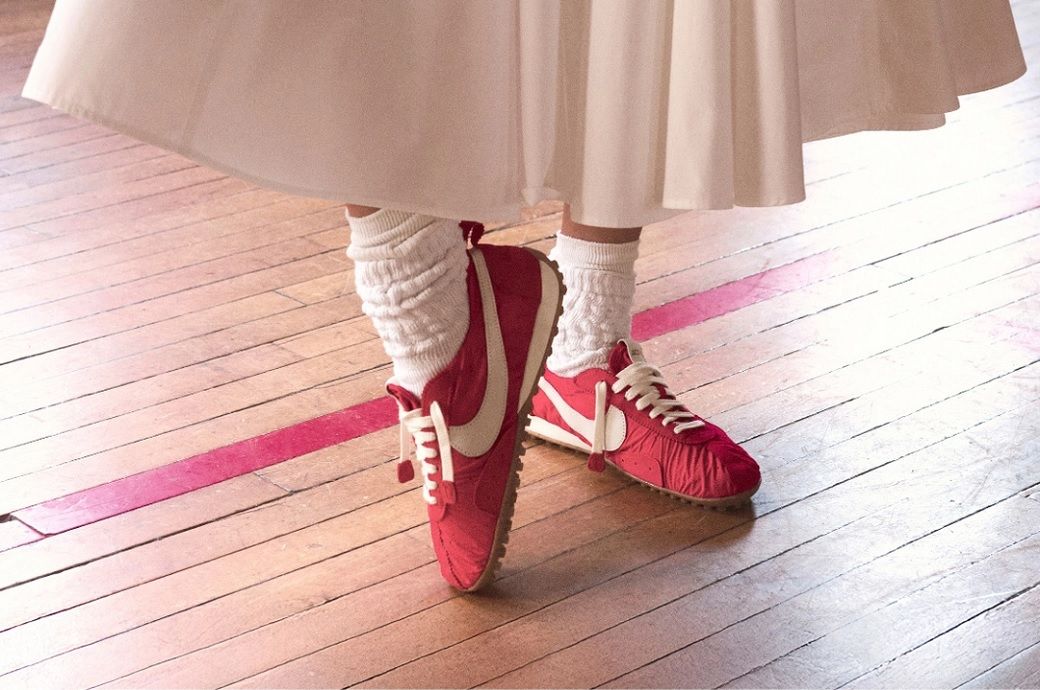
Sleek and fashion-forward, the new sneaker bridges performance heritage and style with speed and sophistication, capturing the same relentless drive that defined its earliest incarnation: a racing shoe named for the crater-like imprint it left with every step during testing for the 1972 U.S. Olympic Track & Field Trials.
Nike and Jacquemus have reinterpreted Bill Bowerman’s legendary Moon Shoe for the first time, blending its 1972 Olympic racing heritage with modern Parisian design.
Featuring a ruched nylon upper, Nike Grind outsole, leather Swoosh and co-branded details, the sneaker channels both sport DNA and fashion aesthetics.
The new Moon Shoe releases in three colourways—Alabaster, Off Noir, and University Red.
The restyled Moon Shoe captures the look and feel of the original icon — Nike’s first to incorporate its famed waffle sole innovation — while adding modern touches that elevate the silhouette and stay true to the brand’s running DNA.
Today’s Moon Shoe features a ruched nylon upper and Nike Grind outsole that blend the silhouette’s racing origins with a modern ballet aesthetic to create a contemporary, low-to-the-ground torpedo shoe that reflects both the simplicity of Jacquemus’ Parisian design philosophy and the dynamism of Nike’s sport heritage.
“Three years ago, when I visited the Nike archives, I first came across the historic Moon Shoe,” says Simon Porte Jacquemus. “I saw a unique, minimal running shoe that was both timeless and modern in its simplicity and execution. I knew it was an opportunity to create a new story and reshape it in the Jacquemus way.”
The silhouette features a leather Swoosh and heel counter, and Jacquemus logos adorn the tongue, heel and sock liner. In a nod to the model’s history, the shoe comes in exclusive co-branded packaging that harks back to Nike’s earliest heritage as Blue Ribbon Sports.
The original Moon Shoe was born from Bowerman’s search for a lightweight traction solution that could give track athletes better grip without weighing them down. He was struck one morning by the grid pattern of his wife’s waffle iron, with its raised squares resembling the exact geometry he’d been chasing, and he poured liquid rubber into the small kitchen appliance to create a new kind of sneaker sole, resulting in an early prototype of what would become the Moon Shoe.
While a small batch of early models debuted at the 1972 U.S. Olympic Trials, the Moon Shoe never went to market. Its DNA was quickly adapted, however, into the 1973 Oregon Waffle and 1975 Waffle Trainer, the latter of which became Nike’s first blockbuster success, giving athletes improved grip and redefining expectations of running shoe performance.
Today’s Moon Shoe is the fourth footwear collaboration between Nike, Jacquemus and his eponymous fashion brand, following the Nike x Jacquemus Air Max 1, J Force 1 and Air Humara. Most recently, the partners joined forces to create an unmissable expression of sport and style through a summer 2024 collection and campaign featuring the city of Paris and Nike’s portfolio of athletes as the ultimate muses.
The contemporary Moon Shoe, which first debuted during Jacquemus’ spring 2025 runway show in Paris, takes on three distinct styles for its commercial release, including the Jacquemus-exclusive Alabaster colorway alongside Off Noir and University Red looks.
Note: The headline, insights, and image of this press release may have been refined by the Fibre2Fashion staff; the rest of the content remains unchanged.
Fibre2Fashion News Desk (RM)
Fashion
India’s QCO rollback boosts textile competitiveness, aids trade talks
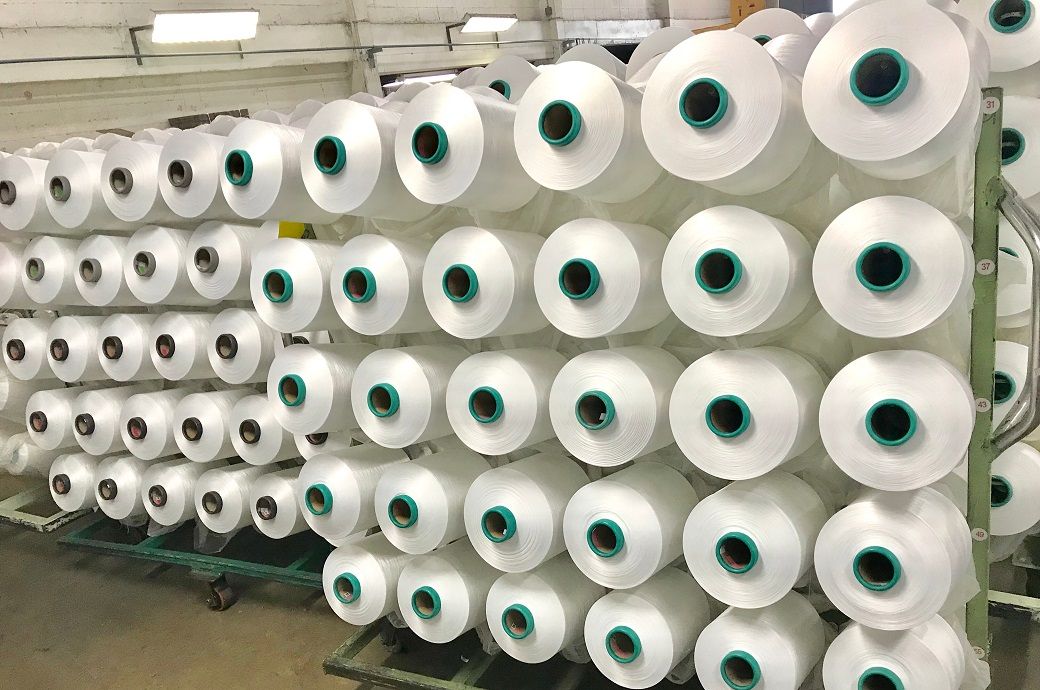
However, during negotiations with the United States, the European Union and several other developed economies, these very QCOs were repeatedly flagged as opaque non-tariff barriers, complicating market access and slowing progress on key FTAs. When major trade partners made it clear that India’s expanding QCO regime was not aligned with global norms and posed compliance concerns under the WTO’s Technical Barriers to Trade framework, the long-pending course correction finally gained urgency, as industry insiders hinted about sudden policy shift of the Indian government.
The recent withdrawal of QCOs for essential textile raw materials—covering PTA, MEG, PSF, PFY, FDY, POY and several technical polymers—has opened the door for full value addition in India’s MMF and textile ecosystem. Manufacturers across weaving, knitting, processing, technical textiles and garmenting say the rollback has restored access to globally benchmarked inputs at competitive prices, reversing the cost escalation that had eroded export competitiveness. Industry representatives note that the move has already begun easing supply bottlenecks, narrowing the gap between domestic and global prices and encouraging companies to revive deferred expansion plans.
Fashion
GS1 France appoints Laura Barnac as executive chair

Published
November 18, 2025
GS1, the international standards organisation underpinning barcode and QR Code technology, has announced the appointment of Laura Barnac as executive chair of its French division.
A specialist in business transformation, Laura Barnac has led projects for groups such as Unilever and LVMH, as well as for mid-cap companies including Daregal. Co-founder of the start-ups Voka and Melco, focused on innovation and marketing, she has also served as an adviser to Bpifrance and Sakina M’Sa, and oversaw Moët Hennessy’s online operations.
A member of the GS1 France Board of Directors since 2019, Laura Barnac now succeeds Didier Veloso, the organisation’s executive chair for the past four years, beginning a tenure that will be marked by the progressive migration from barcodes to augmented QR Codes.
“Laura Barnac has impeccable credentials and a nuanced understanding of the challenges ahead,” say Bertrand de Senneville and Philippe Lemoine, co-chairs of the Supervisory Board of GS1 France. “She has also demonstrated throughout her career a leadership style grounded in listening and the human element, which will help accelerate and amplify the transformation under way.”
Launched in 1973 in the US with the invention of the barcode, and rolled out in Europe in 1977, GS1’s mission is to ensure technological coordination among all players in commerce with regard to product identification tools. The not-for-profit organisation brings together more than 58,000 member companies in France, and over 2 million worldwide.
This article is an automatic translation.
Click here to read the original article.
Copyright © 2025 FashionNetwork.com All rights reserved.
Fashion
Will India-US trade deal shake up Asia’s apparel export dynamics?

India and the US are close to sealing a landmark trade deal that could ease the steep tariffs imposed by Washington earlier this year, as other Asian apparel export hubs keep a keen eye on the developments.
At a recent White House event, President Donald Trump struck an optimistic tone, noting that Washington and New Delhi were “getting close” to finalising a fair-trade deal.
Source link
-

 Tech1 week ago
Tech1 week agoFrom waste to asset: Turning ethanol production CO₂ into jet fuel
-

 Tech3 days ago
Tech3 days agoNew carbon capture method uses water and pressure to remove CO₂ from emissions at half current costs
-

 Politics5 days ago
Politics5 days agoBritish-Pakistani honoured for transforming UK halal meat industry
-

 Sports3 days ago
Sports3 days agoTexas A&M officer scolds South Carolina wide receiver after touchdown; department speaks out
-

 Business3 days ago
Business3 days agoThese 9 Common Money Mistakes Are Eating Your Income
-

 Tech1 week ago
Tech1 week agoSecurity flaws in portable genetic sequencers risk leaking private DNA data
-
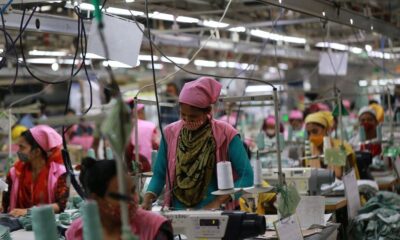
 Fashion1 week ago
Fashion1 week agoBangladesh garment makers eye $5 bn more in exports post policy tweak
-
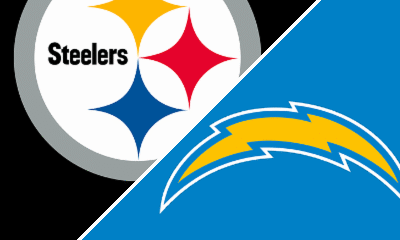
 Sports1 week ago
Sports1 week agoSteelers vs. Chargers (Nov 9, 2025) Live Score – ESPN




